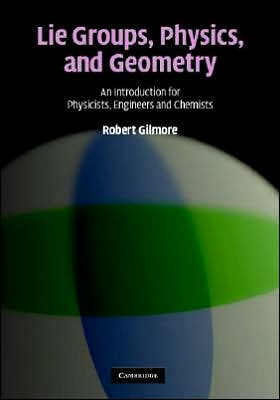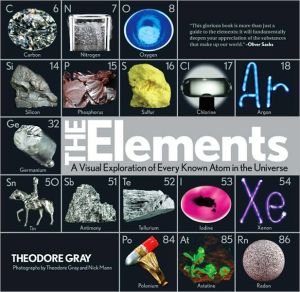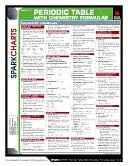Lie Groups, Physics, and Geometry: An Introduction for Physicists, Engineers and Chemists
Describing many of the most important aspects of Lie group theory, this book presents the subject in a 'hands on' way. Rather than concentrating on theorems and proofs, the book shows the applications of the material to physical sciences and applied mathematics. Many examples of Lie groups and Lie algebras are given throughout the text. The relation between Lie group theory and algorithms for solving ordinary differential equations is presented and shown to be analogous to the relation...
Search in google:
Introduction to Lie groups for graduate and undergraduate students in physics, mathematics and electrical engineering.
Preface xiIntroduction 1The program of Lie 1A result of Galois 2Group theory background 3Approach to solving polynomial equations 8Solution of the quadratic equation 10Solution of the cubic equation 11Solution of the quartic equation 15The quintic cannot be solved 17Example 18Conclusion 21Problems 22Lie groups 24Algebraic properties 24Topological properties 25Unification of algebra and topology 27Unexpected simplification 29Conclusion 29Problems 30Matrix groups 34Preliminaries 34No constraints 35Linear constraints 36Bilinear and quadratic constraints 39Multilinear constraints 42Intersections of groups 43Embedded groups 43Modular groups 44Conclusion 46Problems 47Lie algebras 55Why bother? 55How to linearize a Lie group 56Inversion of the linearization map: EXP 57Properties of a Lie algebra 59Structure constants 61Regular representation 62Structure of a Lie algebra 63Inner product 64Invariant metric and measure on a Lie group 66Conclusion 69Problems 69Matrix algebras 74Preliminaries 74No constraints 74Linear constraints 75Bilinear and quadratic constraints 78Multilinear constraints 80Intersections of groups 80Algebras of embedded groups 81Modular groups 81Basis vectors 81Conclusion 83Problems 83Operator algebras 88Boson operator algebras 88Fermion operator algebras 89First order differential operator algebras 90Conclusion 93Problems 93EXPonentiation 99Preliminaries 99The covering problem 100The isomorphism problem and the covering group 105The parameterization problem and BCH formulas 108EXPonentials and physics 114Conclusion 119Problems 120Structure theory for Lie algebras 129Regular representation 129Some standard forms for the regular representation 129What these forms mean 133How to make this decomposition 135An example 136Conclusion 136Problems 137Structure theory for simple Lie algebras 139Objectives of this program 139Eigenoperator decomposition - secular equation 140Rank 143Invariant operators 143Regular elements 146Semisimple Lie algebras 147Canonical commutation relations 151Conclusion 153Problems 154Root spaces and Dynkin diagrams 159Properties of roots 159Root space diagrams 160Dynkin diagrams 165Conclusion 168Problems 168Real forms 172Preliminaries 172Compact and least compact real forms 174Cartan's procedure for constructing real forms 176Real forms of simple matrix Lie algebras 177Results 181Conclusion 182Problems 183Riemannian symmetric spaces 189Brief review 189Globally symmetric spaces 190Rank 191Riemannian symmetric spaces 192Metric and measure 193Applications and examples 194Pseudo-Riemannian symmetric spaces 197Conclusion 198Problems 198Contraction 205Preliminaries 205Inonu-Wigner contractions 206Simple examples of Inonu-Wigner contractions 206The contraction U(2) to H[subscript 4] 211Conclusion 216Problems 217Hydrogenic atoms 221Introduction 221Two important principles of physics 222The wave equations 223Quantization conditions 224Geometric symmetry SO(3) 227Dynamical symmetry SO(4) 230Relation with dynamics in four dimensions 233DeSitter symmetry SO(4, 1) 235Conformal symmetry SO(4, 2) 238Spin angular momentum 243Spectrum generating group 245Conclusion 249Problems 250Maxwell's equations 259Introduction 259Review of the inhomogeneous Lorentz group 261Subgroups and their representations 262Representations of the Poincare group 264Transformation properties 270Maxwell's equations 273Conclusion 275Problems 275Lie groups and differential equations 284The simplest case 285First order equations 286An example 290Additional insights 295Conclusion 302Problems 303Bibliography 309Index 313








